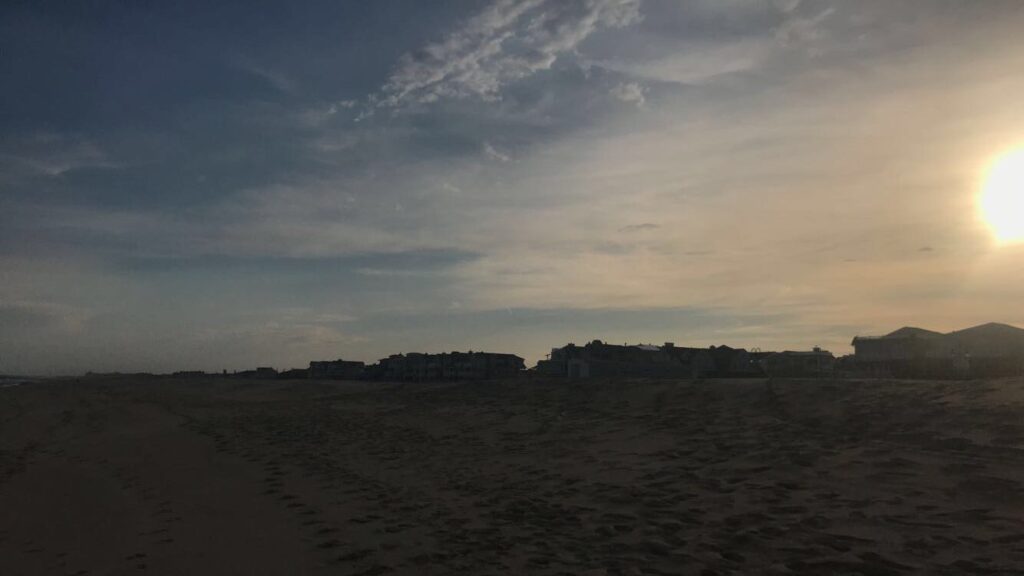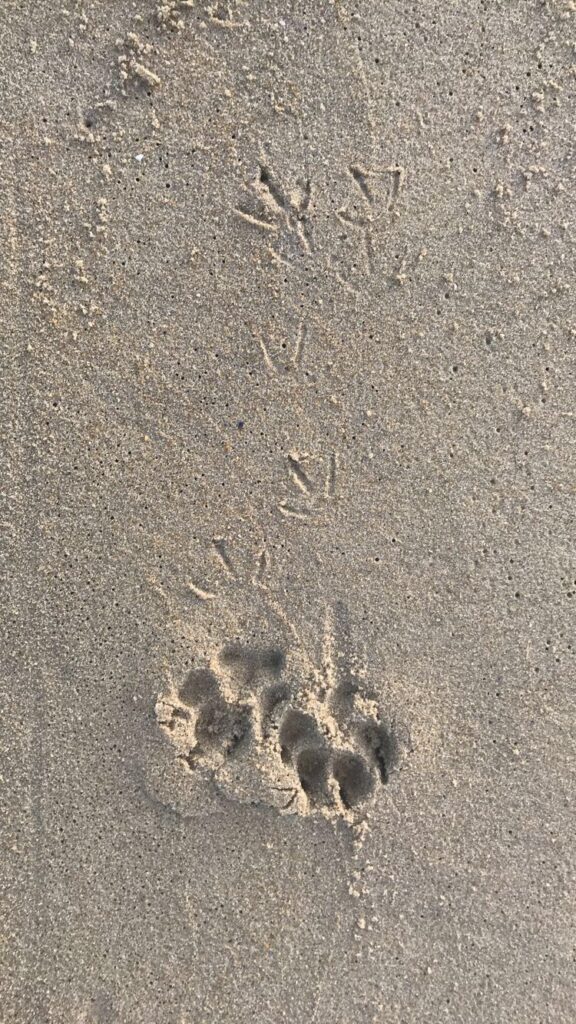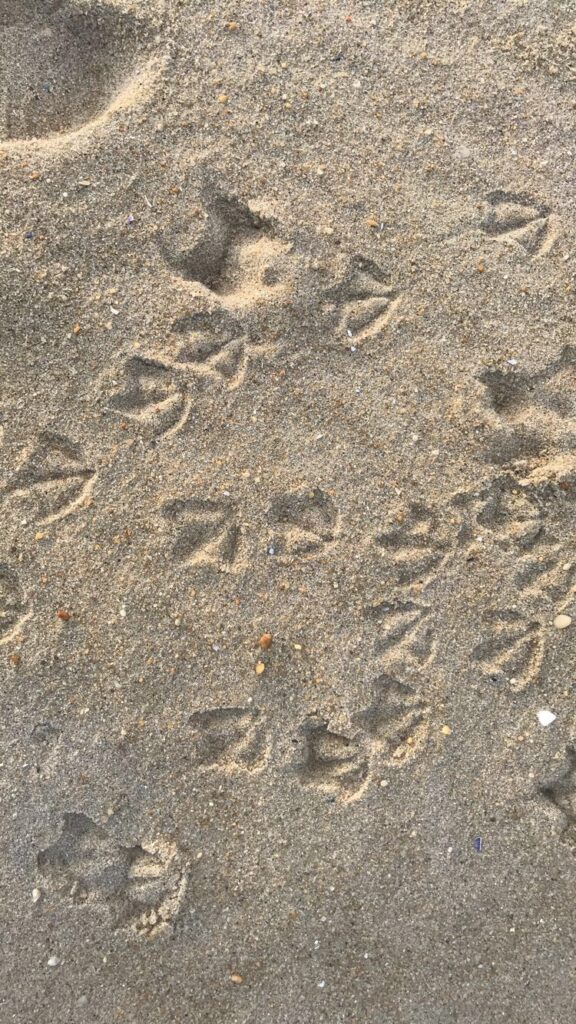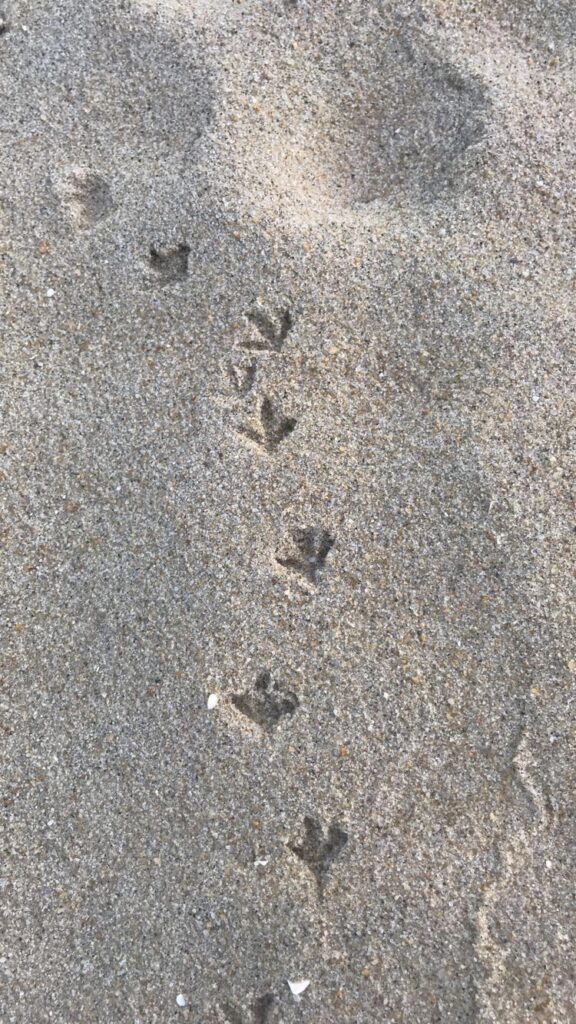
A tradition many local kids in my area keep is to drive to the beach on the first day of spring that it is reasonably warm enough to go. It is often a celebration of an unseasonably warm day, or a 70 degree outlier during a 50 degree week. My friends and I have partaken in this tradition since the first of us got our licenses in high school, and this week at home was no exception. The high on Thursday was 73ºF, and my best friend and made a spur of the moment decision to go to the beach at Belmar, our closest beach at 40 minutes away. By the time we got there it was 5pm, and the temperature had dropped to 53ºF, 48ºF with windchill. When we got down to the water, I noticed the tracks of the many different shorebirds walking around, and made the decision to stay for an hour and use this spot for this phenology assignment. The seashore ecosystem is drastically different from Salmon Hole, or really any site in Vermont, so I thought observing something so contrasting would be interesting.
Because it had gotten cold by the time we reached the beach, there were not many if any other people around on the sand. I got to just sit and watch the shorebirds for an hour. The gulls are very used to large quantities of people being around and during the summer rely heavily on human food and trash to eat. It was interesting to watch them when there were not many people around. The water was still very cold, so I did not see many birds interacting physically with the water, mostly they were flying overhead and poking around in the sand. I observed a few different tracks of different birds, but was unable to find a comprehensive tracking guide for shore or seabirds specific to the Mid-Atlantic region. However, based on individual google searches, I did my best to identify them below (in captions).

I believe these are likely grey plover tracks, because of its smaller feet and thin, non-webbed toes. 
I believe these are seagull tracks because of the clarity of the three toes and pronounced webbing between them. 
Because of the back-facing toe that has registered on some of these tracks, I think this may be a sandpiper’s tracks, and also because of non-webbed toes.
I don’t see many birds at all at Salmon Hole, likely because they have more cover and more means to avoid humans, and also because I do not have strong birding skills. It was nice to be able to watch birds out in the open, and hopefully I will be able to see more birds at my site in Burlington as it gets warmer. Also, I am always surprised to see gulls around Burlington, as it is strange and surprising to remember that Lake Champlain and its microclimate attract gulls as well.
Using Rock’d, I also took a look at the geology of Belmar beaches, since different formations lie under different regions of the Jersey Shore. I found that the substrate is a “lower member of the Kirkwood Formation,” and that the local yellow-white sand has been excessively stained by iron oxides. The lithology is 83% sand and 17% clay, and the formation is 61m deep. It is interesting to compare this to Salmon Hole, since Salmon Hole was once the shore of the Iapetus Ocean, the waves of which have been imprinted on the Winooski dolostone at the site.
